|
Word Gems
exploring self-realization, sacred personhood, and full humanity
Soulmate, Myself:
Omega Point
|
The Inferential Life: Part II
constructing a mode of living, for this world and the next, as derived logical consequence, as extension, of the major principles upon which Nature and Reality are built
|
return to "contents" page
Athanasius Kircher: “Whoever has the desire to pursue philosophy correctly should look to Nature's Archetype in every matter, so that by taking up Ariadne's thread in her intricate labyrinth [that is, finding one's way out of a maze] he may keep himself safe and secure from wrong turns and deviant paths.”
In Part I we discussed the concept of the “central sun,” the hidden God-essence within, the “living energy,” which animates, warms, and directs our lives. It is our source of life, guidance, and virtue.
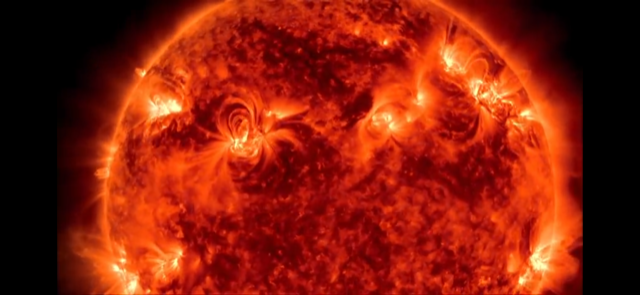
This living energy is found not only within our own beings but at architectonic core of all matter in the universe.
The God essence within, this Universal Consciousness and Intelligence, vivifying all creation, is the quickening agent spoken of by the apostle Paul in Acts 17:28: “in [God] we live and move and have our being.”
Acknowledging all this, and as logical and reasonable response, we now seek to live our lives, what we think, say, and do, in accordance with this great reality. We might call our efforts...
The Inferential Life
In Part II, having identified the enlivening source of our beings, we will be investigating manifold spin-off effects. If the God essence within is the vitalizing principal – how then shall we live our lives?
the ego promotes an alternate inferential life
The average person lives a life reflecting the values of Hollywood, or church, or political party, or maybe the mores of parents or peer group.
Herodotus spoke of this arbitrariness of lifestyle with the Greek word nomos, "custom" or "habit." People uncritically settle into what they know, what they’re taught. Consider this from the "Morality" article:
|
cherished notions of motherhood and apple-pie vary from culture to culture
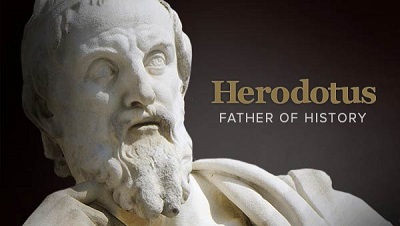
Herodotus (writing circa 450 BC), in his treatise on the Greco-Persian wars, comments on “nomos,” the Greek word for “custom, convention, or law.”
He talks about the arbitrariness of “nomos,” of how people become accustomed to what they know and what they’re taught in a particular culture, religion, or society.
Herodotus offers a disturbing and graphic example of the mutability of “nomos,” which I will refrain from detailing as it might turn your stomach. However, let’s call the custom in question “X.”
barbarity to one, the good life to another
In Greece, Herodotus says, a certain activity “X” is considered a barbarity, something, according to his sensibilities, beyond the pale of what any person of even modicum advancement would tolerate. But, he asserts, in another society of the Near East, “X” is considered a normative expression of “nomos,” indeed, a reasonable, even honored, course of action, with the refusal of “X” deemed to be an atrocity and appallingly distasteful.
who wrote the html-code for your programming, what you believe
The great “father of history,” Herodotus, is correct, of course. That which the average person believes is simply a product of what Grandma said, the Nice Young Man at Church said, what teacher in third grade said. These early pedagogues “wrote the html code,” our cultural programming, for what would become our personal sense of propriety, of right and wrong. In popular parlance, we refer to this burdening weight of prejudicial assumption as our “baggage,” which is not easy to set aside.
you can be conditioned to believe anything
Krishnamurti's lecture, Brockwood Park, England, Sept 14, 1969
"You know, there is a whole section, the Communists, who do not believe in spirit, not in a spirit, nor in a soul. The whole Asiatic world believes that there is a soul, that there is the Atman. You can be conditioned to believe anything. The Communist doesn't believe in God; the others believe in God because that is the way they have been brought up. The Hindus believe in a thousand different gods, conditioned by their own fears, their own demands and their own urges. Can one become aware of these conditionings - not only of the superficial conditionings but also of those deep down - and be free of them? If one is not free, one is a slave, always living in this rat race, and that we call living."
|
But what if we could evolve beyond the servile and puerile nomos?
What if we, led by God within, proactively crafted both a philosophy of living and a lifestyle to reflect the workings of Nature and Reality?
We would then live our lives as representation and microcosm of “what’s real,” of "Nature's Archetype" as suggested by Athanasius Kircher. This would become a natural modus vivendi for us, a natural religion, a natural wisdom.

Kairissi. I like this. I think The Inferential Life is one of the most important ideas we've come across in some time.
Elenchus. There's much to discuss here.
this time we won’t redistill reality, making it into something it isn't, in favor of private agenda
Elsewhere I’ve stated that the essence of cultish thought is that of redistilling reality. The root idea of “cult” is “to cut,” that is, to pare and fashion, to systematize and order. This is what all materialistic belief systems of the world – politics, religion, science, corporate, academia -- attempt to do. They try to tear minds to pieces and reconstruct them in their own image.
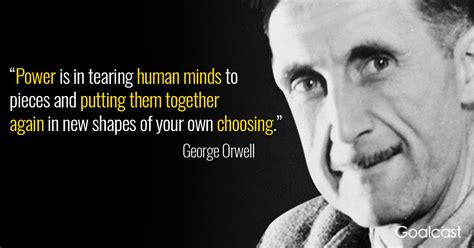
this time we will distill reality, extract its essence, and reflect it in our lives
Almost everyone on planet Earth, every unenlightened person, is engaged in some form of cultism. But all this is just an upside-down Bizarro-world version of what we should be doing.
Instead of latching onto a purported infallible guru, we are to “go within,” find truth and God for ourselves; instead of patterning our lives on the “one true doctrines” of another, we are to investigate "what's real" for ourselves, we are to learn directly from God, and also God's creation.
all the universe, the material creation, becomes a ready classroom, instructing us on the hidden nature of God and Reality
Students of Word Gems will understand that, while the Bible is not an infallible work, it does contain certain inspirational teaching. And we’re looking at a good example of wisdom in Psalms 19:
The heavens declare the glory of God;
the skies proclaim the work of his hands.
Day after day they pour forth speech;
night after night they reveal knowledge.
They have no speech, they use no words;
no sound is heard from them.
Yet their voice goes out into all the earth,
their words to the ends of the world.
The material universe has “God’s fingerprints” all over it; that is, we can learn a great deal about the mind of God by studying the creation. And as we collect our gold nuggets of knowledge, we should think about the implications of what we’re learning, what it says about the nature of God; and then, by extension, we are to infer from these findings a guide for living.
It is The Inferential Life.
Word Gems constitutes, for me, a kind of life-notebook wherein, over the years, I’ve collected my best findings on how things work. Allow me to share the most noteworthy additions, and then to extend these toward The Inferential Life.
|
Editor’s prefatory comments:
Brevity must rule here, for, as Elenchus asserted, there is so much to discuss. For example, we will need to look at physicist Tom Campbell’s experiments, but we cannot offer the details in the present forum. It would make the current writing far too long and unwieldy. Instead, I will provide links to background material on the Word Gems site for your own study. This means that, when I state a principle for living, there will be little or no attempt to provide justification for its inclusion in the discussion. I will rely on you to do the required homework which will supply rationale.
Also, let’s keep in mind that, in the following discussion, there is no necessary sense of “Because I see ‘x’ in Nature, I should begin to add ‘y’ to my list of things to do.” It's not just about "doing" but also, and maybe primarily, constructing a philosophy of life to guide our thinking. Editor's note: See Viktor Frankl's thoughts on "doing versus being."
Much of the discussion below relates to a philosophy of living. This is why, as we’ve said, The Inferential Life, in addition to expressing “a natural modus vivendi" for us, is also “a natural religion, a natural wisdom.”
|
searching for solid ground on which to build a foundation
Rene Descartes famously posited “cogito ergo sum” – “I think, therefore I am” – as bedrock of one’s own being and, upon which, one might construct an edifice of inerrant knowledge.
It was a good honest effort, but Descartes didn’t go deeply enough. However, this area of self-analysis might be a suitable first step for our investigations of The Inferential Life.
Several items of knowledge vie for beginning place in our discussions. But let us begin, and we’ll see which holds the hegemony.
information to be considered:
Only Universal Consciousness is real (root word, "res," a "thing").
It is the ground of all being, the matrix (root word "mother") upon which all else exists (root word "stands out," that is, from nothingness).
inference to be drawn:
This statement is hard for us to accept, even if we want to. We don’t know what it means, especially when tables and rocks and trees seem very solid and real to us.
The great scientists, the quantum fathers, however, were faced with this conclusion: only Consciousness is real.
That table that seems so real and solid to us, as we “drill down” to smaller and smaller units of matter (root word "mother," but not our true mother), the apparent solidity of atomic electrical force-fields disappears into a nothingness. “Whatever matter is,” said one researcher, “it’s not made of matter.”
Everything in the 3-D universe, everything made of matter, suffers this insubstantiality.
And what about us? Our bodies are made of matter, and so, we too, our bodily form, reduces to a nothingness. And this is why it's said that "we are in Consciousness" rather than we housing Consciousness in the brain.
But what about the spirit, the soul? Is this not “real” in itself? We discussed this on the “Being” page.
What we deem to be the “self,” as we fall down the rabbit-hole of investigation, is also revealed as not a “thing,” not a stand-alone entity. The sense of “I” which we commonly know does not indicate a “self” alone in the universe. The sense of “me” is an individualized expression of Universal Consciousness and does not originate from oneself per se as an isolated, independent fragment of being.
So what do we have then?
Matter is not real, in a primary sense. Neither is the “self” something alone, not an autonomous island of being. Instead, at core essence, we are linked to, and become one with, Universal Consciousness.
And this Universal Consciousness is the only thing - which is not a "thing" in the ordinary 3-D sense of the term - that is, the only reality, stands alone, subsuming everything else. Everything derives, is made, issues, from Consciousness.
Only Consciousness is real. This is true in our world, and in all coming worlds of the afterlife.
Editor’s note: We are called “individuals” – that is, “undivided” entities. What does this signify? As we gather evidence of what it means to be human, “undivided” indicates we are not to be fragmented, suffering dualism, division, strife within ourselves. Krishnamurti spent his life discussing this. We are to be “individuals,” that is, “undivided,” in terms of holistically living from our centers, linked to Universal Consciousness, with no existential aid from any external authority. God is within. This is our “energy source.” We are linked to God at the core of being. As such, we are in need of nothing. Cultism opposes this truth as it seeks for support from external “strong father figures.” But this denies our essential sufficiency, our “undivided” state of perfection.
|
information to be considered:
Materialistic science asserts that all the universe, all reality, even human awareness, along with virtues or emotions such as love and joy, are built up or derive from sub-atomic particles. These “hard little bee-bees” of matter, it is said, give rise to a Newtonian, materialistic philosophy of existence. But this “upward causation” view ignores the paradigm-shattering findings of the founders of quantum mechanics and its consciousness-based construction of reality.
inference to be drawn:
Because the universe, the world, and even ourselves, are not materialistic in elemental essence, we cannot build for ourselves a materialistic philosophy of life.
|
information to be considered:
A materialistic philosophy, unwarrantedly so, creates a nihilistic perception of life, one without meaning or purpose. Here, we find no strong reason to live at all, and therefore no accountability, no impetus to do well or guide toward self-improvement or evolvement.
inference to be drawn:
This materialistic existential malaise has no foundation in reality as the universe is based upon a vital Consciousness, not inert particles of matter. And because Consciousness is a living force, and, indeed, the very wellspring of life, we can know that there is purpose to living, and therefore an impetus to do well.
|
information to be considered:
The old view was that the “real me” is a body, and a spirit or a consciousness lives in the body, is housed in the brain. But this is not accurate. The “real me” is consciousness itself, and it is not localized in the body, does not reside in the brain. In other words, consciousness is not “in” us, as such, but we are “in” consciousness.
inference to be drawn:
Consciousness, not matter, is the ground of all being. We are in process of becoming individuated aspects of Universal Consciousness. Our essential selves find epicenter in awareness itself. This suggests that the focus of what it means to be alive is not rooted in the body; which also means that, when the body dies, awareness is not affected.
Editor's note:
Do you remain unconvinced that human awareness, the mind, is not localized in the brain? See the astonishing life's work, the profound findings, of brain surgeon Dr. Wilder Penfield.
|
information to be considered:
Descartes taught that the essential, irreducible “me” is one's own thinking.
inference to be drawn:
The most fundamental level of human essence is not thought, but, instead, it is the wordless awareness, the unadorned consciousness, the silent witnessing presence that stands behind the thinking. It is the part of us that knows that we are thinking.
|
information to be considered:
Matter is not made of hard little bee-bees; as one physicist said, "matter is not made of matter." There are no building blocks of reality. As we drill down to investigate the hidden structure of sub-atomic particles, everything disappears into a nothingness.
inference to be drawn:
Everything is made of, derives from, Consciousness. What appears to be hard-surfaced, with sharp edges, upon closer inspection, is just an atomic electrical force-field; which, if we disassemble the atom's parts, as Heisenberg discovered, dissolves into an unknowable, unchartable probability wave.
|
information to be considered:
The atom cannot be known. There is no model for it. The miniature solar-system picture has been obsolete for a hundred years, yet it’s still taught in schools. Heisenberg was the first to perceive that the atom cannot be known, not because we don’t have the right measuring instruments, but that, by its very nature, the atom is unknowable.
inference to be drawn:
The smallest element of physical reality – which is not “physical” as such – cannot be known because it’s a derivation of unknowable Consciousness. The most we can say about the atom is to speak of probabilities in terms of location and speed. We, too, are composed of Universal Consciousness, and its essential unknowableness speaks to our human potential, which is unmapped, unlimited, unfathomable, as is the Source from which its derived.
|
information to be considered:
Materialism teaches that we live in an objective reality. This means that objects made of matter, it is said, have an existence of their own, quite apart from an observing Consciousness. It means that things exist even if they’ve never been observed by a sentient force. But the Double-Slit experiments reveal that this is not an accurate representation of how things work.
inference to be drawn:
Physicist Tom Campbell has done an excellent job of explaining the meaning of the various versions of the Double-Slit experiments (see his videos). The results of these famous investigations, repeated thousands of times, says Tom, in university labs around the globe, are not in dispute; however, materialists deny the implications. Nevertheless, the Double-Slit instructs us that what we live in is not an objective reality but a kind of “virtual reality.” It is a reality ruled by an observing Consciousness, which takes a “measurement,” resulting in the production of physical particles as matter. Without this process, matter is not matter but remains mere probability waves.
|
information to be considered:
Tom Campbell helps us to understand the analogy of a “virtual reality.” He says it’s like a video game. Think of little characters in a computer simulation – maybe an elf, a monster, or a soldier. But these characters, of course, have no life of their own. They live and move as a function of both the software programmer and the person sitting at the computer playing the game. The world of the elf is not a real world; it’s just digital pixels on a screen. We can’t climb into the computer and chase the elf and the monster because it doesn't exist for those of us linked to a 3-D world. Their existence is “virtual,” just an expression of a higher sentience outside the computer.
inference to be drawn:
Our physical bodies are like the elf and the monster. They have no real, lasting substance. The elf and monster cannot move themselves but are controlled by someone outside their world, at the computer desk; so too, our physical bodies are controlled, are given "life," via an animating consciousness outside the body, and outside the 3-D world.
Dr. Federico Faggin, computer scientist and now a leader in the new science of consciousness, says that our “selves” represent two aspects: quantum and Newtonian. The physical body (Newtonian) is like a flying drone being remotely controlled by an operator. This operator, our consciousness (quantum), is not part of spacetime, but resides in another dimension of reality.
|
information to be considered:
To the elf and the monster, the existence of the person sitting at the computer is unknowable.
inference to be drawn:
Universal Consciousness, God, or the Universe – whatever term we use for an Overarching Intelligence -- is unreachable for us, in any practical sense.
|
information to be considered:
The Double-Slit experiments, called “the only mystery of science,” offer a radically counter-intuitive view of how things work. Many materialistic scientists reject these findings, calling it “weird science”; meaning, “We don’t understand it, it offends us, because the implications severely restrict our materialistic paradigm of the universe.” But Tom Campbell has done a very good job explaining that these experiments are not hard to understand – once we agree to give up the obsolete notion of matter as fundamental unit of the cosmos. The crucial element of the Double-Slit experiments is verification of new information in the world. This means that, while an observing consciousness is required, along with a “measurement," the essential aspect of the experiments revolves about new matter, and new information about it, verified in the world. At this point, "probable particles" have arrived in the world as matter, are no longer mere probability waves. Having been verified by observers, the new matter is here to stay and becomes part of the "rule set" of the game, affecting all players.
inference to be drawn:
Tom Campbell explains that what these experiments really tell us about the world is that our reality is information based. The late great physicist Dr. John Wheeler, who coined the term “black hole,” also gave us a pithy phrase to encapsulate this information-based finding. He called it “it from bit”; meaning, “it,” or physical matter, from “bit,” as in computer bits of information. This is really something.
Editor’s note: Professor Amit Goswami asserts that the advances in quantum mechanics mandate the revision and updating all of the sciences – biology, chemistry, physics, and all spin-off branches. These are currently behind the times and, in terms of foundation, are obsolete. This is so because they operate on a deterministic Newtonian model of realty, which, for 100 years already, has been overthrown as primary doctrine. Quantum mechanics affects everything in the universe – there are no “hard little beebees” at the core of reality, only probabilities. The universe is constructed on a principle of consciousness-based information – as John Wheeler said, “it from bit” – creating a “virtual reality.” There are no “building blocks” of the universe. This is why, if one drills down and deconstructs subatomic particles, everything disappears into a nothingness; that is, an immaterial consciousness-essence.
|
information to be considered:
To better appreciate the importance of the following comments, the reader is strongly encouraged to view Tom’s videos explaining the Double-Slit and Eraser experiments.
In very brief summary: If “probable particles” have gone through two slits, and if detectors record information concerning which slits were entered, and if we look at this detector record, then we get actual particles at the back of the screen in the form of two clumps.
But if we refrain from looking at the detector records, we now fall down the rabbit hole. Let’s say we did these experiments, last week, last year, ten years ago, a hundred years ago – the duration of time doesn’t matter.
The detectors did their job. A record was kept, maybe on a computer disk or photographic film, or some such. But the records have not been looked at, and the back of the screen has also not been looked at. Keep in mind that these experiments are over and done with, having been completed a long time ago.
the data is divided into two groups of 50
Now let’s say we have 100 experiments like this. Nobody’s looked at the data. And now we shuffle the data, make it all random, and then we look at the detector records of 50 of them. This means that we now know which slits the “probable particles” went through for 50 of them. With this information, we look at the back of the screen, or the record of it – and what do we find? In all 50 cases we find two clumps of particles from the two slits.
Concerning the remaining 50 experiments, we have the detector records, but, in this case, we do not look at any of it; instead, we burn the data. It’s gone, it's "erased." There no longer exists any detector records concerning which slits the “probable particles” went through. And now we look at the back of the screen – and in each case, concerning all 50, we find a “diffraction pattern,” a wave pattern. No clumps.
These experiments might have been completed a great many years ago, but the images at the back of the screen were created only moments ago -- when you decided to look, or not look, at the detector data.
inference to be drawn:
When we decide to look, or not look, at the detector data, we determine whether the particles hit the back of the screen as a particle of matter or as “probable particle” acting as a wave.
If we look at the detector data, then information has entered the world concerning a new particle of matter. We have verified it. It’s now part of the information of the world that everyone has access to. Why is this important? Nature goes out of its way to keep information consistent, stable, and non-paradoxical.
|
information to be considered:
When materialistic scientists review information of the “Eraser” experiment, they indulge in fantastical accounts of “The particle must have gone back in time to do what it had to do in order to make the back of the screen be what it turned out to be.” Or, they say that the particle “knew” what was going to happen before the choice of the observing consciousness was made. But it’s these kinds of explanations, even bestowing upon an inert particle “psychic” powers, that give science at large a bad name and the Double-Slit a label of “weird science.”
Tom explains: There is no going back in time; no concurrent "wave-particle concurrent duality" - in other words, you can't have something as two different things at the same time; there is no psychic knowing; and there is no weird science, that's not possible as Nature is a fully functioning, perfectly interrelated whole - as the great quantum fathers asserted. All these errant concepts represent artifices by materialists to lend credence to a non-consciousness-based paradigm of reality. It's "spin doctoring," it's "damage control." The problem with the materialists' view is that they cannot give up the idea that, when the “particle” approaches the slit, it’s only a “probable particle” at that point. It's not yet an actual particle. This is what Heisenberg meant when he said that the atom has no definite model. It doesn’t become anything “real” until a measurement is made, that is, until we have hard data on its trajectory, and have verified the data. Until then, we have no real particles, only “probable particles.” The materialists insist on clinging to Newtonian ideas of objective reality, and this makes for outdated physics, because Newtonianism has been superseded by the quantum world.
inference to be drawn:
There is no going back in time as this would create farcical temporal paradoxes; such as, interfering with your parents' meeting thereby jeopardizing one's own existence:
Going back in time would destroy or encumber the informational “rule set” of this reality. And maintaining a stable and logical "rule set," it is clear from the experiments, is one thing that Nature safeguards to the utmost. Nature goes out of its way to ensure that information, once verified in the world, is consistent and stable for all players of the game.
There’s nothing "weird" about quantum physics - it's the materialists who supply the "weird"; indeed, it’s all quite clear, once you let go of the concept that matter is fundamental in the universe.
Editor's note: There is an aspect to this that’s very similar to the errant teachings of Big Religion. Materialistic science, in its refusal to accept consciousness-based reality, is willing to say anything, believe anything, in order to maintain its materialistic paradigm. They claim that it’s possible to be a wave and a particle at the same time. Nowhere in other sections of science do we see this kind of nonsense, that of, an entity’s ability to be more than one thing – two different things! – at the same time. They explain it as, “If you want to learn about this quantum mechanics thing, you just have to get used to the idea of ‘weird science,’ of things not making sense, of telling yourself that we can’t understand quantum physics and that we'll never understand it.”
This is just materialistic propaganda to put you off the task of thinking clearly and doing your own investigation. As we’ve discovered, there is no such thing as “weird science” because Nature is a unified whole, and beautiful in its simplicity. However, notice the parallel with the “one true holy” doctrines offered by Big Religion:
“What's that you say? You can’t understand how God can be three persons in one entity? And it doesn’t make sense to you that babies are born evil, deserving of hell, but for a sprinkle of water on the forehead and a few magic words? And you can’t fathom how a purportedly loving God could consign you to eternal fire just for missing a Sunday meeting? Well, these things are just holy mysteries, and we’re not meant to know the answers hidden in the secret mind of God.”
Do you see how this flim-flam works? All aspects of cultism – political, academic, religious, scientific – operate on the basis of “keep’em in the dark, tell’em they’re no good without an infallible guru to lead them, claim that inscrutable mysteries are the norm and the way things work, and above all, do not question the hierarchy.”
|
Quantum Leap, “The Leap Home” (1990)
In one of the most popular episodes of the entire series, Sam finds himself sent back in time to age 16. The old farm is still there; mom and dad, still alive; little sister has not yet ruined her life with bad decisions; and older brother Tom has not yet been killed in Vietnam.
Who wouldn’t, in terms of natural sentiment, want to change certain pivot-points of the past when everything began to go off the rails? We understand the sentiment. And yet, if we could see things from that “higher mountain” of godly perspective, we would perceive that what we call “bad” of the past were precisely the lessons we needed to learn in order to produce for us current wisdom and maturity.
And concerning brother Tom, the fallen soldier, yes, he was greatly missed by the family. But if there really were such a thing as going back in time and changing things, and if we could restore lost loved-ones to mortal life, they would not appreciate it all. They’re living a new life now, the “real life,” in Summerland, and they’re totally done with the sewer-pit that is this world.
The problem with a good intention, as expressed in a sci-fi time-travel account, is that it’s all very materialistic. The story’s premise preaches a doctrine of “this world is all there is, and when you’re gone, you end up in black oblivion, and that's the end of everything.” But this view is greater fantasy than time-travel.
|
|
information to be considered:
The various versions of the Double-Slit tell us that Nature is very concerned about keeping the information of this world in a format that is logical, consistent, and stable.
inference to be drawn:
This means that God is very concerned that we have “good data” to work with. This doesn’t mean that we don’t have to strive for it, but when we find it, it will be logically consistent, wondrous in its simplicity, and beautiful in its order and design. This, in essence, is what many of the world’s most stellar scientists have stated, such that, “the path of the beautiful” led them to their greatest achievements.
This could not happen by accident. It means that knowledge, as we gain a larger perspective of it, forms itself into an artistic pattern of beauty, marvel, and wonder. This would be impossible if Nature were erratic, haphazard, and not very concerned about keeping the information of this world in a format that is logical, consistent, and stable, for all players of the game.
Editor's note: in fact, if Nature, at core, retained no element of regularity, no so-called "laws," there could be no such thing as "science" because Nature draws breath from principles of corroboration and reproducible experimentation. And those who begin speaking nonsense that "science is weird" begin to undercut their own credibility and basis to do science. See Dr. Steven Goldman's thoughts on this.
|
information to be considered:
Again, the various versions of the Double-Slit tell us that Nature is very concerned about keeping the information of this world in a format that is logical, consistent, and stable.
inference to be drawn:
To employ a biblical metaphor, it signifies that “God is Light.” This means that it is God’s nature, not to conceal but, to reveal. He is not a miser of knowledge, carefully counting his mysteries under cover of darkness, lest we discern one of them. Rather, quite the opposite. As time goes on, as we mature and develop our knowledge-acquisition faculties, the so-called mysteries of the universe will disgorge themselves, one by one, to the onslaught of investigations by enquiring minds.
|
information to be considered:
A touchstone of truth concerning the validity of new information is that it always takes the parsimonious, the most efficient and elegant, path, the shortest route, to effect its purpose. The principle of Occam’s Razor, that of shaving away unnecessary complexity, is embedded within how things work, as superintended by Nature.
inference to be drawn:
As we live our lives, as hurtful things happen to us, we are tempted to wonder why it needed to be so, or why God allowed this-or-that to cause us pain. The “most efficient path” principle tells us that, whatever happened to us represents, in our personal “classroom,” the least amount of suffering for us, or possibly the suffering that we ourselves insisted upon, to learn our required lessons that we might prepare ourselves for the joy to come.
It is interesting that many on the other side offer testimony to the effect that, whatever sufferings were required of them while here, "in hell," it was all worth it, to receive that which is being prepared for us in Summerland.
|
information to be considered:
The biosphere reveals an intertwined latticework, an ecosystem of cooperation and mutual dependence, among species. There is no “dog eat dog,” there is no “law of the jungle.” Even field-research biologists who go looking for "vicious competition" cannot find it.
inference to be drawn:
Individuals, corporations, and governments have justified the ruthless acquisitive path by claims to a natural world of “law of the jungle.” But it doesn’t exist. Instead, we find Nature, once again, "going out of its way" to create an ecosystem that eliminates or severely reduces competition among species. In fact, as perceptive biologists have stated, no species, not one, on planet Earth could survive without accessing a mutual dependence, harmony, and cooperation. Our duty is clear: We are to build a life for ourselves that reflects Nature’s proclivity toward charitable work and philanthropy.
|
information to be considered:
The complexity of beauty, order, and harmony built into Nature could not have occurred via chance and randomness. For example, proteins must be enfolded in a particular way for them to function. However, even the simplest of proteins might potentially be folded in so many different ways, that for it to have discovered -- if proteins could "discover" -- just the right pattern by chance would require a duration of time equal to trillions and trillions of times the history of the universe. In other words, it didn’t happen by chance, but by design. (See the three articles on "Not Enough Time.")
inference to be drawn:
The Anthropic Principle suggests that the universe was created with humans in mind. The mathematics of probability offers very good assurance that this is correct. It is a materialist’s dream that the complexity of the world around us, a balancing of this against that, might have come on the scene by chance. The math won’t support it; not even close. What this means is that the world we see could not exist but for some form of Intelligent Design.
|
information to be considered:
The principle of Entropy says that everything in the universe is running down, tending toward more and more disorder. The final phase of this will occur a hundred billion years from now when all the stars burn out and the universe goes dark.
inference to be drawn:
In the midst of this universal entropy, we find pockets and punctuated bursts of creativity, complexity, and high-level order. The coming of life, especially sentient life, is a most notable example of this cross-current. A flowering of Nature's beauty of complexity could not occur in an entropic universe but for an injection of energy from an Outside Source.
|
information to be considered:
Nature, at times, adds both to entropy and to complexity.
inference to be drawn:
Quantum physics professor, Dr. Amit Goswami, says that when Nature collapses probability waves to create matter, it does so according to two options:
(1) if the new information coming into the world is of a non-vital nature to the purposes of Universal Consciousness, then the results will take the form of a “random draw” among a myriad of possibilities; the new item will come as normal probability distribution. This leads to common entropy. However,
(2) if the new information coming into the world is of a vital nature to the purposes of Universal Consciousness, then the result will reflect some aspect of creativity, complexity, and order.
This latter is what we see in the fossil record of 530 million years ago. It was the “Cambrian Explosion,” the coming into being, almost “overnight” geologically speaking, of fully formed new life forms in their legions, never seen before on planet Earth.
The message for us, in our personal lives, becomes this: Most of the time, what happens to us is just a "random draw" of events among a great many possibilities. But if we - our soul, not the ego - truly needs something for its progress, then we can expect our own private "Cambrian Explosion," an injection of beneficent and artful complexity, out of the blue, at just the right time, not a moment too late or too soon, to offer salubrious course correction for our developmental path.
|
information to be considered:
Universal Consciousness, in its fullness, says Dr. Goswami, represents all, literally all, possibilities. For evolution to proceed, Consciousness must limit what is possible. Therefore, evolution begins with involution, a paring down of possibilities.
inference to be drawn:
When we suffer loss, we grieve the diminishment. But a superintending Universal Intelligence may very well be “paring down” the possibilities for us in order to make room for destiny, a primary direction, a coming plenitude, for our lives.
|
The Big Bang: collapsed probability waves produced the first matter, immediately shepherded by quantum morphic fields
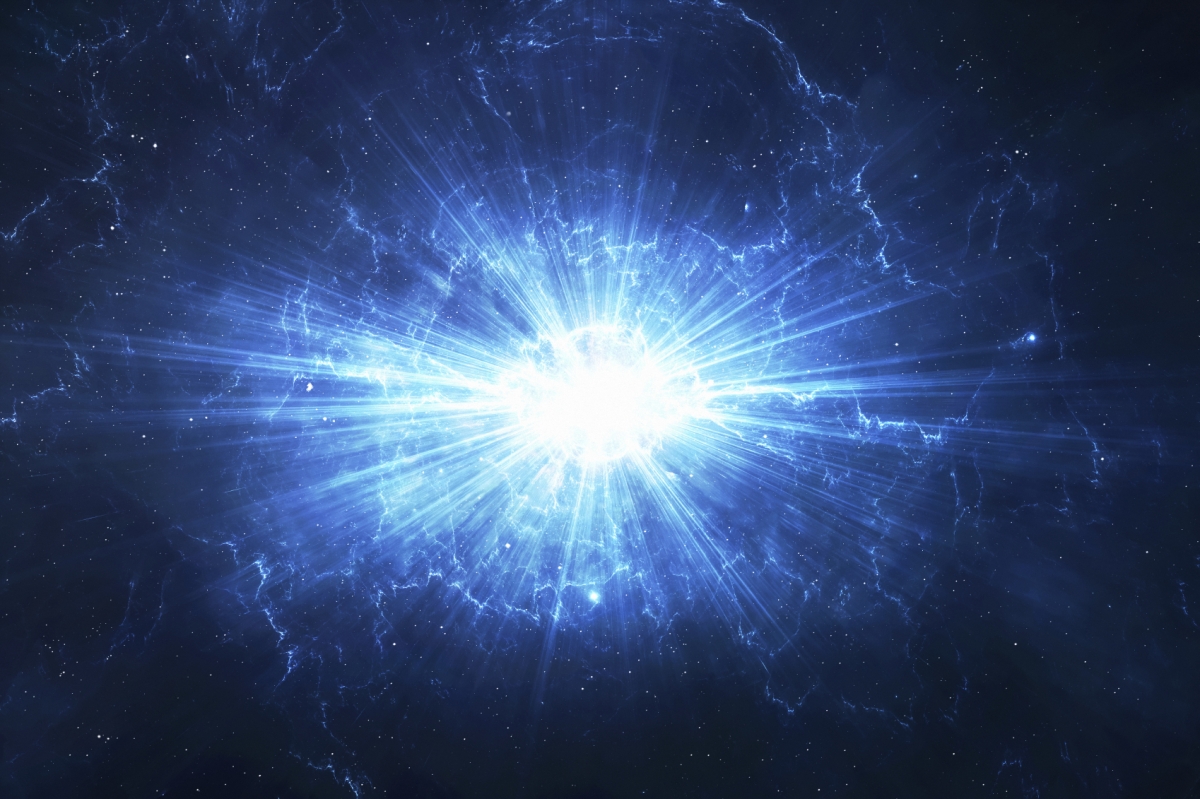
As we learn more about the inner workings of quantum mechanics, we begin to perceive the nature of the origin of the cosmos.
Dr. Goswami speaks of Universal Consciousness paring down the infinite quantum possibilities. This pruning and narrowing led to a generalized embedded philosophy of how things should work in the universe, as expressed in its “laws,” habits, and characteristics.
This philosophical basis became codified in quantum morphic fields, says Dr. Sheldrake. These fields are “hidden blueprints” which organize energy, and constitute the underlying shaping essence of apparently self-organizing systems.
And so what we have, 15 billion years ago, concerning the Big Bang is the initial “creative discontinuity” of Universal Consciousness. Just as matter, material particles, are brought into existence by a process revealed in the Double-Slit experiments, so too, 15 thousand million years ago, in a hot explosive instant, Universal Consciousness collapsed probability waves to create matter.
This newly-created matter was then immediately shepherded by morphic fields which fashioned the inchoate matter, progressively and over time, into the familiar systems we see in the universe today.
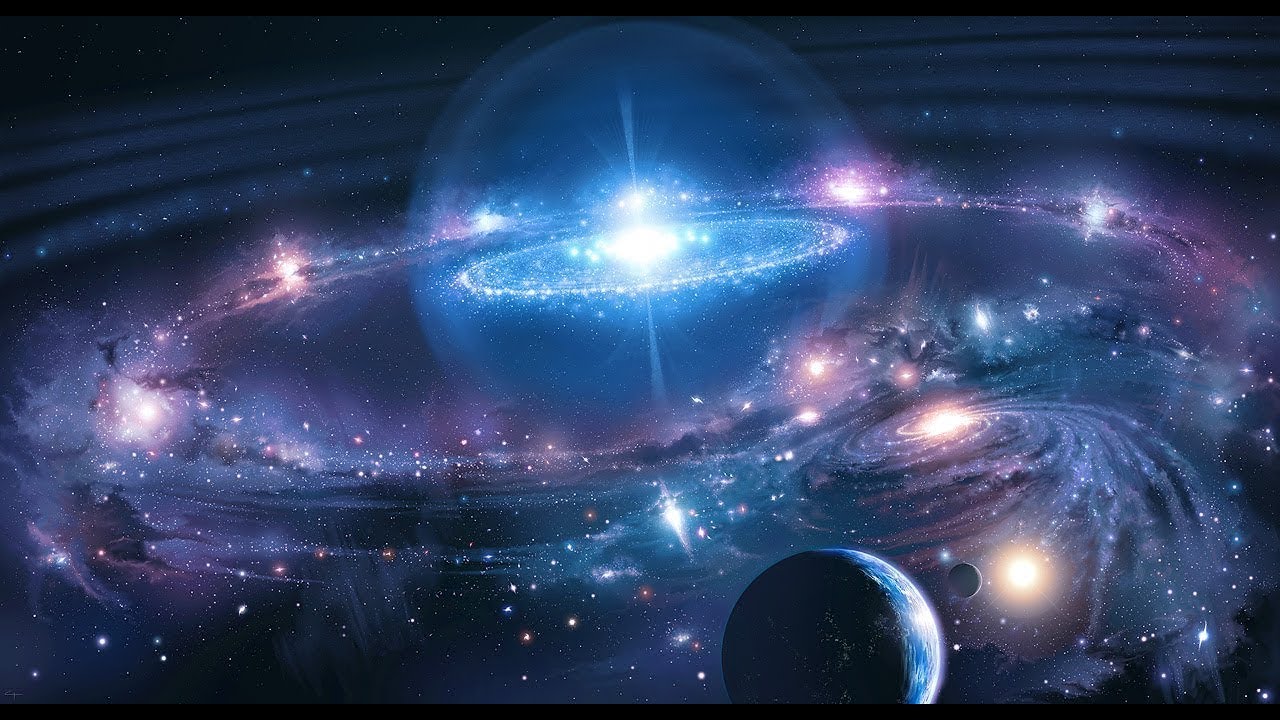
|
|
information to be considered:
The Anthropic Principle states that the world is as it is because the coming of humankind was foreseen.
inference to be drawn:
I think it’s more than this. If one little protein cannot be created by chance, then what about the complex interplay of all elements of the world? The harmonious coming into being now invites a combinatorial explosion of ultra-gargantuan probability odds.
The meaning for us, I think, is this. If chance cannot account for what's around us, even in the smallest of details, then we are allowed to look to Intelligent Design.
Our lives, in the main, reflect – right now, this moment -- exactly what we need to progress in our spiritual lives. It means that, at this moment, wherever we are, with whatever resources at hand, is exactly where we need to be, with exactly what we need to have.
It may not feel this way, but, I suggest, the protest comes from the ego-side of our natures, not the higher self.
|
information to be considered:
530 million years ago in the “Cambrian Explosion” a great multitude of major new body-types (“phyla”) suddenly appeared on planet Earth. Since then, no new phyla have come on the scene, and many have become extinct.
inference to be drawn:
The fossil record reveals that the process of evolution is not one of infinite expansion. The “Star Wars bar scene” of creatures with two heads and eight arms is not our future.
Evidence from the fossil record suggests that phylic evolution plays itself out over very large, but finite, periods of time. Instead of expansion, since the Cambrian Explosion, there has been a narrowing down of diversity within the major taxonomic divisions, with an increase of complexity within smaller and smaller sectors of species grouping.
This narrowing process suggests that evolution is taking us toward a specific destination.
|
information to be considered:
Science fiction enjoys portraying Nature fraught with entertaining incongruities – time travel and changing the past, that sort of thing – but authentic Nature does not allow anomalies in the “rule set” of “the game.”
inference to be drawn:
Nature insists on providing a corpus of knowledge that is non-contradictory, stable, logical, consistent, and non-paradoxical. Further, this “rule set” is meant to be an open book for us, non-mysterious, accessible, and forthcoming. Eventually, with study, research, and investigation, we will become privy, more and more, to the secret mind of God.
Reality as an “open book” has far-reaching implications for us. As God and Nature stand ready to share a wealth of knowledge, this spirit of cooperation as evidenced by "their" example, of lifting others to higher levels of sentience, becomes a veritable mission statement for our activities as Daughters and Sons of God.
As we gain knowledge, and as we share it, as we promote cooperation, we reduce entropy, disorder in the world. This knowledge, as we've seen, is a form of beauty in the universe, as it expresses a finely-tuned architectonic symmetry and interlacing; by extension then, the end result issues as a promotion of love, a sense of unity, oneness, and harmony, throughout the kingdom of God.
Editor’s note. There are no paradoxes in Nature; once we have enough information, or are willing to receive it, thereby dismembering pet paradigms, then all seeming paradoxes melt away into a “That's so simple, why didn’t we see it before?”
Ernest Rutherford: "All of physics is either impossible or trivial. It is impossible until you understand it, and then it becomes trivial." Rutherford, discoverer of the atom's nucleus, is right: everything is too complicated to understand - until we finally do, and then it becomes too simple. All of nature is beautiful in its simplicity, once we finally perceive the essence.
Religions which attempt to make much hay with the notion that “mysteries” are part of God’s nature and "just the way it is," that we are not meant to know, and, worse, should not even ask, stand outside the purposes of God. Proclamations of “It's a mystery, you are not meant to understand” tell us nothing about the will of God but a great deal about the cultish intentions of power-and-control organizations who want to keep you stupid and dependent.
|
information to be considered:
The deterministic Newtonian “clockwork” universe is 100 years out of date. Newtonian physics is fine and took us to the Moon and back, but it’s a mere narrow subset of how things work and fails us as we consider the underpinnings of reality. Consciousness-based quantum mechanics rules supreme and has overthrown Newtonianism.
inference to be drawn:
Materialistic physics says that we’re only machines. Everything is constructed on an “upward causation” model, they say; meaning, sub-atomic particles gather to form greater and more complex entities, all the way up the line to spiral galaxies. It’s all deterministic, they say; just as the trajectory of a particle can be known if we have enough data concerning forces impinging upon it, so too, they say, we human beings are nothing but machines, entities acted upon, and quite deterministic. The average person doesn’t realize just how far this bankrupt concept is taken.
For example, most university history professors follow the materialistic line, and they will tell you that there are no heroes in history, no great men and no great women. These, they say, were merely a product of their times, buffeted by social forces. There is no free will, they say; no courage, love, joy, fortitude – all these, and all virtues, are but illusions, just expressions of inert sub-atomic particles in orchestration. We hasten to point out that, if this were true, then their own propaganda would also be mere illusory determinism - but they would not like to be categorized as mindless pawns of social forces.
Newtonianism, as an underlying philosophy of reality, is dead. We are not machines. We are not mere pawns, buffeted upon a wave of meaninglessness as we make our way through a purposeless life. We are not machines, and this means that we can change, are self-directing, can do more, and become better.
|
information to be considered:
Despite its popularity in movies, books, and the press, there is no such thing as “parallel universes.” There is no such thing as an infinite number of “you’s” somewhere out there in an infinite multiverse.
Like so many other myths of materialistic science, this concept was purposefully created as counterattack against a rising tide of information supporting a consciousness-based reality.
See the evidence, or rather the non-evidence, here and here.
inference to be drawn:
There is only one of you, one sacred you. Like the beautiful but solitary snowflake, there’ll never be another.

As the “Course In Miracles” says, “you are very holy.” And they’re not going to be making any more of you. The job for each of us is to bring to the fore a unique set of talents, with a view toward honoring God, by our dedicated and consecrated lives, in a manner that is utterly one-of-a-kind.
This sentiment is embedded in Jesus’ teaching: “Embrace this god-life, really embrace it!”
In my studies of the afterlife evidence, of natural law, of the true self versus the false, of how life unfolds on the other side, there is a precept which comes up again and again. My friend Adrian Smith called it “the Absolute Sovereignty of the Individual” principle. It goes not too far to say that it's the "prime directive" over there. For better or worse, you are totally in charge, and responsible, with unlimited freedom, concerning your own life and development.
|
information to be considered:
The essential difference between quantum mechanics and Newtonian physics is not that of the very small versus the large; the effects of the quantum world are more easily discerned on the micro level, but smallness is not the deciding factor. Rather, quantum things are uncertain things, and might come to exist in physical reality only to various degrees of probability.
inference to be drawn:
The material world we see around us in not fundamental. It appears to come with hard surfaces and edges, but this is illusion; it seems to be a world of strict cause-and-effect, of unbreakable determinism. On the surface of life, in a narrow context, this is true enough – religions tend to emphasize this regularity with their doctrines of absolute law and "sow and reap."
However, as we peel back the layers of reality we find that, fundamentally, we live in a different kind of world, one ruled by probabilities. It is a world governed by an underlying uncertainty. It's built into the system and cannot, nor will it ever, be removed - why? because this allows for "creative discontinuities". This is what Heisenberg, in his great astonishment, discovered. This uncertainty, as a “random draw” of what occurs, always leads to more entropy, more disordered energy, in a universe that’s “running down" (see the discussion above on “entropy”).
However, in the midst of this systemic entropy, we also find punctuated bursts of complexity and order. This happens when Universal Design-Intelligence proactively injects energy into the world system to effect its grand purposes.
What is the lesson for us in terms of how to live? People are frightened of uncertainty. This egoic fear, a terror of resultant annihilation, serves as bedrock reason as to why people join and stay with fear-based cults, which include, to one degree or another, almost all organizations on planet Earth, be they of the academic, political, corporate, religious, or scientific stripe (see the articles on “Cultism” for a full discussion). Here's the psychological dynamic: People join and remain as members of cults because some sort of infallible guru promises them certainty and predictability of outcome. Safety and security are purchased with the currency of autonomy and personal freedoms surrendered. Orwell explained it to us.
The Double-Slit experiments, revealing a quantum world of uncertainty, direct us to accept this uncertainty as a normal way of life. It doesn’t need to be scary and discomfiting. This is so because we can see the record, in history and all around us, that Universal Design-Intelligence acts at appropriate times to bring order and well-crafted answer into the world system for our benefit. In this vein, the Anthropic Principle teaches us that all things were made for humans, as causal randomness cannot be supported by the mathematics of probability.
Let’s state this very clearly. We need to leave the cults, we need to grow up and leave our bogeyman fears, we need to become comfortable with uncertainty – because it’s a benign “structured uncertainty and randomness,” with the odds in our favor. Things are being guided toward our ultimate benefit.
We, the inner child,

need to leave behind all “strong father figures” under whose mantle we’ve been hiding. We need to stand in the open sunny air and realize that all things work together for good for the Daughters and Sons of God.
Postscript: I’m reminded just now of something from “The Bridges of Madison County” – Francesca and Robert.
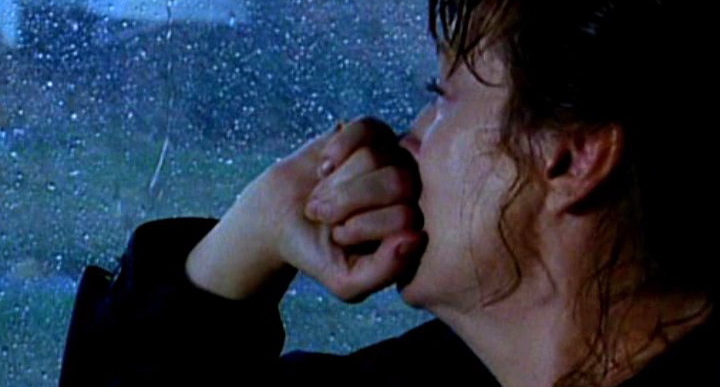
Interviewer: What is the very most important lesson you learned from Robert?
Francesca: That's easy. I always remember when he said, "Most people are afraid of change, but if you look at it like it’s something you can always count on, then it can be a comfort."
Interviewer: Tell us what he really meant by that.
Francesca: Well, as I've indicated, at the time I was a little fearful and closed-minded in my thinking. I was afraid of change. Robert meant that if we are to evolve as human beings we must become comfortable with growth and change. Whatever small portion of truth we currently possess, whatever we think we know, whatever we are, we must hold loosely in our hands... because there's always so much more to come.
|
the Greek gods, along with modern pagan deities, are fond of creating moral dilemmas, paradoxes, insoluble problems - an unstable and conflicting 'rule set' - but these do not exist in Nature and Reality
As a child, I was taught, by representatives of modern pagan deities, the story of a family man who was dying of some grave illness. This of course caused much grief among wife and children.

However, one of the saintly offspring earnestly implored the deities-that-be to accept the child as substitutionary sacrifice -- an appeasement of God's wrath for some forgotten sin, no doubt -- an even exchange of persons, allowing the father to live.
According to the story, after the bargain was struck, the child, inexplicably to all objective reviewers, began to sink into severe infirmity; at the same time, the dad experienced a miraculous recovery. The child died, the father was delivered to robust vitality.
Well, what are we to make of such Machiavellian negotiation? - some dark-spirited god treating people like valueless pawns in a chess game; what does it say about the perverted mindset of purported deity behind this kind of cosmic “let’s make a deal.” Are we to be impressed by the bloodlust, the rigid unreasoning scruple, the implied neurotic requirement of debt satisfaction? We discussed this kind of checkered view of morality on the “Jesus” page.
Editor’s note: The inculcation of puerile minds, too young to defend themselves against bogus cultish proposition, is a form of child abuse. The predator organization cannot promote its ways in an open forum via meritorious argument, and so it resorts to mindless indoctrination and memory work, like training a parrot, rather than reason-laden discussion. Fear-and-guilt inducing teaching afflicts the immature devotee thus causing a kind of parasitical attachment by teacher to its student-host. It’s a “dance with the devil” relationship: the protagonist needs to be worshiped, and the true-believer needs security; ersatz as they both may be - until some future time when eyes begin to open and both sides are set free.
Pagan deities have a long history of being unreasonable, touchy, and hard to please. The Greek gods were no different. In Aeschylus’ Oresteia (458 BC), a trilogy of theatrical plays, we find the lead characters deeply immersed in moral conundrum.
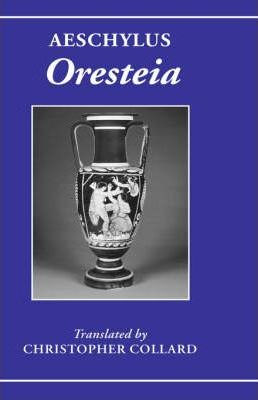
Agamemnon is commanded by Zeus to lead the Greeks to Troy to rescue Helen. However, he is unable to launch the military ships as the winds blow unfavorably. But goddess Artemis offers to change the contrary zephers, but only at the price of blood sacrifice – Agamemnon’s own tender daughter, Iphigenia! No matter which course is chosen, Agamemnon, as he sees it, will suffer dereliction of duty and severe moral conflict.
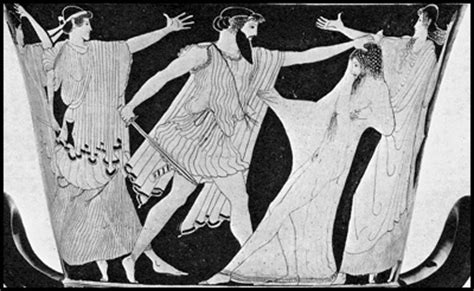
Later in the play, Agamemnon’s son Orestes is also faced with impossible choices. He is required to avenge the murder of his father, but the assassin is his own mother. Should he commit matricide or leave duty to father undone?
Many might assume that moral conundrum might be unavoidable. I suggest that moral dilemma occurs only when the ego is involved. As we’ve learned, “God is light,” and it is God’s nature to reveal, to make clear, to inform. The "rule set" of Nature and Reality does not conflict with itself - as it does in religions created by the ego.
If we operate according to the dictates of the “true self,” there will be no moral conundrum.
This does not mean that we might not suffer as we untangle and unravel a latticework, built over years, of egoic selfishness and fear-based thinking; almost assuredly we will encounter suffering.

But the choice, the right choice, directed by the true self, will finally be clear, and there will be no question as to the propriety of one’s actions. We discussed this principle on the “Divorce” page.
It requires courage to admit youthful error, to unwind all of the ego’s intrigues and schemes of a lifetime. And there will be suffering, in the short term; but there will be no Agamemnon double-edged sword of “damned if I do, damned if I don’t.” After a time, everything will settle into a harmonious conclusion.
Yes, you will suffer, in the short term, but you will finally be on the right side of natural law; thereby fortifying one's sensibilities, in this world, and upon crossing over.
|
information to be considered:
The average person is afraid of “the scientific evidence for the afterlife.” If you bring up the subject in conversation, the typical response will be along the lines of “I’ll worry about that later, I'm going to live one life at a time.”
inference to be drawn:
Most people, as the great psychologists inform us, are led, overtly or subliminally, by the fear of death. This natural survival sense is buttressed with guilt-induced terrors of future judgment by an angry god concerning purported sins of one’s life. And this is what’s really going on with people wearing the mask of false bravado when conversations turn to news of Summerland. They don't believe there'll be any good news for them.
Big Religion is largely to blame for this apprehension of judgment to come. But there is nothing for anyone to worry about; however, Dear Mother Cult has done her best to obfuscate the reality.
|
more than drinking the koolaid
The long reach of cultism encompasses much more than crackpot churches. The root idea of cult offers the sense of "cut." This core concept of "cut" leads us to images of refinement and refashioning and, by extension, development, control, pattern, order, and system.
Cultism as systemization finds a ready home in religion and philosophy which seek to regulate and redistill the patterning and ordering of ideas. However, in a larger sense, the spirit of cultism extends to every facet of society. We find it scheming and sedulously at work in politics, academia, family, corporations, entertainment, science, artistry – anywhere power might be gained by capturing credulous and fear-based minds.
See the “cultism” page for a full discussion.

|
|
'the truth is not a fragile thing and will eventually rise to the top of a heap of competing ideas'

Physicist Tom Campbell, in clear language, explains the history and significance of the quantum mechanics revolution of 100 years ago, how its implications were denied by materialists, and why, as Tom sees it, its proper explication might lead to a better world, free from the power-control-force paradigm afflicting all of us today.
READ MORE
|
The Inferential Life requires us to spend some time, in this world, preparing for the next. How do we know this? Our own inner whispering true selves guide us, if we allow; additionally, we possess from those who’ve crossed over a great many testimonies regarding what they experienced upon arrival. For those who transitioned in a state of fear, they found their sensibilities to be shut down: for a temporary period of time, they could not see or hear. You’ll want to read these reports in the “Sensibility: 1-Minute” writing.
|
'know thyself'
"Know thyself" represents some of the most ancient wisdom of this world. It was inscribed upon the Greek temple of Apollo at Delphi.
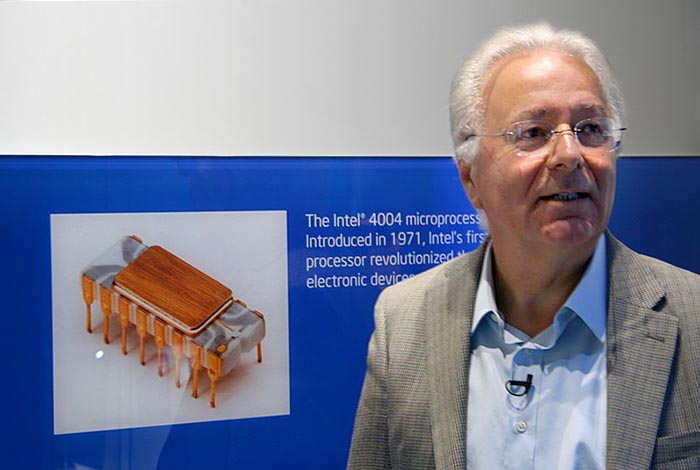
And today, a leader in the new science of consciousness, Dr. Federico Faggin – also the inventor of the first microprocessor in 1971 – asserts that the most fundamental characteristic of Universal Consciousness is that of self-knowing. All of cosmic evolution, Faggin suggests, is driven by Consciousness desiring to know itself.
We ourselves are derivatives, "made in the image," of Universal Consciousness, possessing, in embryonic form, all of its major traits.
And isn’t it interesting that, if we self-obfuscate and refuse to “know thyself,” the very first thing that happens to us upon crossing over is to be “sent to remedial education”, dark detention, where we will remain, until we agree, agree with ourselves, to fulfill our primary mandate.
READ MORE
|
|
information to be considered:
Again, according to Tom Campbell and a growing number of physicists, this reality is “virtual” and “information based” and not objective as materialists contend.
See the videos on the “Double-Slit” and “Theory Of Everything” pages.
inference to be drawn:
The world around us, though appearing to be solid with hard-edges, dominant and unforgiving, is not the real world. It’s only a subset of reality and is being directed from a higher plane.
How can we know that the flowers and birds, rocks and streams, around us are not “the real world," though it all seems pretty substantial?
There are many aspects to an answer here, and the “Double-Slit” is a primary source, but let's review some major tenets.
The elf and monster in a computer game can move around, hit each other over the head, or whatever. But if we look closer at these entities they’d all disintegrate into a mass of pixels of light.
Our world is like a computer game, and our bodies are like the elf and the monster. And if we were to examine the structure of the matter composing our bodies, beneath the sub-atomic particles, we’d find it all disintegrating into a mass of photons, and then of nothingness.
The elf and monster do not move themselves but are controlled by a force outside of their reality; our bodies, too, are not primary – we are not bodies, as such – but are controlled by a consciousness outside the body, in a higher reality, that is not readily accessible to the body; just as the elf and the monster operate as “unaware” that a person at a computer is directing them.
Much could be said here, but the main point to be taken at the moment is that – our world, the one we see around us, is not the real world, but a small subset of reality; a contrived and directed one.
Our consciousness, the true self, directs the body. It is the “computer player” of the game. But our own individualized consciousness is also integral-part of a larger Universal Consciousness system. This latter is the “original computer software programmer.” And the other-dimensional plane of reality inhabited by Universal Consciousness is the ultimate real world.
Many reading this, I daresay, will interject, “How can these things be? It all sounds so fanciful and fairy-tale like.” To this I will just say, “You haven’t looked at the evidence. You haven’t looked at the research, featured in the many Tom Campbell videos.”
When you do, you’ll come away with a different point of view. See the experiments, completed a year ago, ten years ago, a hundred years ago – but the outcome hasn’t been looked at yet. This outcome, what we deem to be an outcome, will change, this very moment – though the experiment was over-and-done a hundred years ago – based on whether we now have new data in the world or not.
How can the outcome vary – this moment – though the experiment was completed decades ago? Was the result somehow changed a moment ago? The answer is, no, nothing was changed; rather, nothing had been finalized, it was all in a state of quantum indeterminacy, like "Schrodinger's cat," neither alive nor dead, until a "measurement is taken," until we make a decision – this moment, decades after the fact, make a decision – to either look at the data or to erase the data.
No final outcome came into being until Universal Consciousness determined that new information had entered the world in a final and fixed way.
Why is this so? It happens this way because we live in a reality that is “information based” not an objective reality. Our five senses deceive us. We think that things here, in this world, are solid, and have always been here, whether we know about them or not. But we are deceived in this judgment. Things come into being when a “data stream” reaches us, as needed; just as the elf and monster receive information to do this-or-that, as needed. See the experiments for details.
This new information, once established in the world, is now fixed, for all players of the game; unless, it happens that this data is somehow lost, with no record of it; in such case, it would be as if it had never been here, and the next time this general area is investigated, the result will likely play out differently as "random draw" of quantum possibility. How can this be? It's this way because we do not live in an objective world in which things are here whether we know about them or not, but it's a kind of digital information-based world. See the experiments for details.
Editor’s note: In his debates with Niels Bohr, Einstein made the sardonic comment, “Does the Moon disappear when I’m not looking at it?” This was meant to disparage the “observer effect.” But this trivializes the issue. The Moon does not disappear when we glance away because information about the Moon is well established, by a great many players of the game, as “rule set." However, if all those with information about the Moon’s existence, along with all records, were somehow to disappear, then the next sentient beings who might study the Earth could find, as “random draw,” something else, or something different, near the Earth; or not. We discussed how quantum physics applies to the macro world, as well, and our Moon example speaks to this: if all records and witnesses to its existence were to be lost, this would become, in principle, a quantum "eraser" experiment, just like the 50-50 illustration mentioned above. Einstein did not like any of this, the implications of quantum probability, and spent the last decades of his life attempting to overthrow this idea. He failed.
Universal Consciousness is in a 15 billion year process of strategically, not generally, reducing entropy in the cosmos. Entropy is a measure of disorder and randomness. When entropy is high in a digital reality, little information will be forthcoming. When entropy is reduced, that is, when there is more harmony, order, and system, information flows more readily.
Editor's note: And this is why random mutations are not the driving force behind bio-evolution. Random mutations increase entropy in the "digital" DNA code, thereby producing gibberish, "noise," with no information transmitted. See discussion on the "Evolution" page.
We, as “individualized consciousness units,” are part of a grand work promoted by Universal Intelligence to reduce entropy in the cosmos, the eventual outcome of which is to promote love – which is another word for more harmony, cooperation, oneness, and order.
|
information to be considered:
The "truth" is a living thing.
inference to be drawn:
Krishnamurti made this statement: "truth is a living thing." That which shapes and guides both our world and personal life is not some inert, inanimate force. It's an intellegent, strategizing entity. Much of the time, it likes to give the appearance of non-involvement, but it will "move your cheese" in a flash, as necessary, to effect its overal long-term plan of leading us to lasting happiness.
We know it can spring into dramatic action when it wants to. The "Double Slit" and the four major "creative discontinuities" of history affirm its ability to act. This means that we are not alone, have not be left to our mere-mortal devices.
|
information to be considered:
A leader in the new science of consciousness, Dr. Federico Faggin (see above) – also the inventor of the first microprocessor in 1971 – asserts that we ourselves are derivatives, "made in the image," of Universal Consciousness, possessing, in embryonic form, all of its major traits.
inference to be drawn:
There is a great deal that might be offered here, and I must direct you to that the “consciousness” and “quantum” pages featuring the work of Dr. Faggin.
However, to very briefly summarize, Dr. Faggin’s research leads him to understand that all of cosmic evolution is driven by an underlying desire – an “absolute appetition” to use Leibnitz’s phrase – on the part of Universal Consciousness to know itself.
This means that we, too, as derivatives of Universal Consciousness, are designed to seek for meaning and self-knowing. We create suffering for ourselves to deny ourselves a search for meaning, the rational, truth-focused life.
This signifies that we, too, are entities, not just conscious but, self-conscious.
There can be no self-consciousness without personal identity. Identity offers one's (individualized) self the capacity to have an experience.
This capacity to experience is also the capacity to know, to realize, to self-reflect.
A capacity to self-examine also creates a capacity for agency, which is the capacity to act, to extend oneself, to exert power.
This means that such entity will seek to arrange and control its environment in order to facilitate knowing, and self-knowing.
A capacity for agency, a proclivity to direct one's own experience, naturally leads to the existence of free will, for it would be impossible, in this causal chain, for an entity to know itself without an ability to choose.
All of this begins with the most fundamental attribute of Universal Consciousness, that of a desire toward self-knowing. All of cosmic evolution, Faggin suggests, is driven by Consciousness desiring to know itself.
Again, we, ourselves, as "made in the image" of Universal Consciousness, will not create a happy existence for ourselves unless and until we also purse "the truth," beginning with "know thyself."
Also, by extension, we see here the meaning of "evil." Totalitarians interfere with a cosmic process of self-knowing when they deprive others of personal freedoms. Those who maliciously indulge in such power-mongering can expect to end up in the most terrible sectors of the "rat cellar"; and the worst cases, political criminals with the hardest hearts (but the biggest sloppiest grins on tv), we are informed, will likely be living in the sewer-pits for thousands of years.
|
information to be considered:
We are "made in the image" of this Universal Consciousness. But how can we confirm this affinity?
inference to be drawn:
The easiest answer is to “go within” and to feel the bonds of similarity.
However, there’s also indication offered by the natural world.
Dr. Faggin, and also Dr. Sheldrake, speak of “part-wholes,” sometimes called “nested hierarchies.”
Briefly, it works like this. Consider sub-atomic particles. They form atoms. We could say that the atoms are “wholes” with the particles as “parts.” But molecules are made of many atoms. And now the atoms take the role of “parts” with the molecules as “wholes.” But organic tissue is composed of many molecules, and now the “part-whole” configuration changes again.
I think we can see how this works. And this alternation of “part-whole” takes place all the way up the line to stars, galaxies, and clusters of galaxies. See Faggin and Sheldrake for more on this.
The “part-whole” concept is embedded in all of Nature, and therefore those who study the workings of Universal Consciousness are led to suspect that Consciousness itself employs this principle as, in a sense (but not actually), it divides itself to create new entities in the universe.
This would mean that we – all of us; indeed, all of creation – are “parts” of the totality, the ultimate “wholeness”, which is Universal Consciousness. In "The Wedding Song" we called it "singular pervasive reality."
|
information to be considered:
The most fundamental aspect of Universal Consciousness is that of knowing itself. How do know this to be true?
inference to be drawn:
To answer this we need to take a step back to view a more fundamental question in science today. How do we know there’s such a thing as consciousness at all?
Materialists believe only in matter. They say that everything is made of particles, and that your mind – including your love, free will, virtue – is just an illusion; that, consciousness isn’t real but only something that naturally emerges from a complex creature.
But other scientists disagree. On the WG site you’ll find their writings. They pose what’s called “the hard problem” for materialists; essentially, if matter is the only thing that’s real, how do you get feeling, intuition, meaning, love, virtue, the qualia of an experience, the unique inner perceptions, and all the rest – how do you get all this from dead inert matter?
Materialists have no answer for this. But it’s what they want to believe, a “holy doctrine” of their “infallible” religion, and they refuse to convert to another cult.
But things are changing, with many scientists today – along with the great “quantum fathers” of a hundred years ago -- understanding that consciousness, not matter, is the primary reality; that everything derives from consciousness.
And so we begin our short discussion here by accepting the existence of consciousness (which should be an obvious reality; but not to the cultish materialist mind).
The new science of consciousness seeks to analyze the essential characteristics of consciousness.
It could be said that consciousness is knowing. Animals have consciousness. They know a lot of things. But animals do not know that they know a lot of things. Animals do not self-reflect.
Animals are players in the game but humans are both players and observers. We know we’re players in the game but the animals don’t.
It’s a big difference.
This capacity for self-knowing, it could be argued, is the most salient feature of higher level consciousness. It divides us from the rest of the animal world.
Self-knowing, self-consciousness – called “apperception” -- is a topic discussed by the famous philosophers. Kant spoke of degrees of self-consciousness, with the higher grades a “transcendental apperception.”
For our purposes here, however, sufficient to say, a capacity to “know thyself” seems to be the most elemental attribute of a higher-level consciousness.
And so we look at the universe and, as good minds have realized, the attendant complexity on cosmic display could not have come from nothing nor could it have assembled itself by chance -- the math of probability, to say nothing or ordinary logic, will not support the fancy -- some Supervising Designer must have intelligently brought it all into process.
what can’t you believe
In the Sheldrake / Abraham / McKenna Trialogues, that took place between 1989 and 1998, the latter participant, Terrence McKenna, irreverently asserted, to the effect, “If you can believe that all the energy and matter, everything that you see around you, came into existence from nothing in a hot nano-second, then – what can’t you believe?”
Yes – “what can’t you believe?” But these are the "holy infallible doctrines" of materialists.
Some call this "inferred" entity “God,” or “the One,” or Universal Consciousness, or some such. But, whatever the name, we come to see what this “Person” is like, what consciousness is like, by looking at his/her/its handiwork – that would be all creation, including you and me.
Editor’s note: Most theologians do not like the idea of calling God a person. Granted, there is no “sky-god with a long white beard on a marble throne on-high,” that’s just pagan mythology; but to say that God is not a personal God, with no attributes of personhood, I think, is very wide of the mark. I say this because, where do we -- purportedly, "sons and daughters" of God -- think we got our own sense of personhood, if not from God? Further, I would posit that the very essence of consciousness relates to meaning, feeling, semantics, intuition, all the virtues, all that makes for the honorable spirit, etc, etc, -- and how could one assume a position of Universal Consciousness without oneself possessing the primary attributes of consciousness? We should also point out that a God that seeks for self-knowledge is a God that learns, and will do so eternally; as will we. This means that the Big Religion concept of Omniscience is errant. How could God know everything in a quantum universe built upon uncertainty and probabilities? And, as some philosophers have pointed out, a God that knows absolutely everything would have nothing to think about. What's to think about if you know everything?
|
|
Is 'God' a personal God, with personality, who knows us individually, or just a life-principle to be found in all aspects of creation?
This is a question that is debated on the other side. Opinions vary. For example, in the books featuring the channeled direct-voice mediumship of Emily French, we find intellectuals over there discussing this issue.
As I look at all the evidence, I must come down on the side favoring a “personal God who knows us” while also acknowledging that “God as a universal life-principle” is also true. This position of complementarity, not contradiction, reminds us of Niels Bohr’s proposition.
In the “evolution” research report we looked at the mathematical evidence strongly indicating that the complexity-harmony we see woven into the fabric of the universe could not have come to us via randomness.
This suggests that a real, living, Intelligence subsumes it all. Each of us has what we call "personality," a sense of personhood, because - to my way of thinking - we reflect the archetypal source of personality and personhood.
While accepting these statements, we also deny that deity is a "sky-God, somewhere 'up there', with long white beard, sitting on a marble throne". Such image represents fodder of ancient myth, the ignorance of primordial peoples, and has no place in reality. God is "spirit," is consciousness itself, is not a "thing" in the 3-D universe. More than this we have difficulty affirming.
This is a large subject, one that we shall be investigating for a very long time to come, even in Summerland. However, here is one testimony from the other side which sees things as I do:
The following is from Flashes of Light from the Spirit-land, through the mediumship of Mrs. J. H. Conant, by Allen Putnam, Frances Ann Conant, 1872.
Question. ls the Deity a being, or is he a principle pervading all Nature? If the latter, why do you address him as a being, in the invocation?
Answer. That our God is a personal, and also an impersonal God, is equally true. Since the God-power or God-life is everywhere, he, it, or she is of course personified everywhere. I believe in the worship of all that is worthy of worship. If it is the flower, let us worship there. If it is the human soul, let us worship there. If it is a lofty thought, let us worship there. Wherever we see anything, or perceive any state, either of mind or matter, that is worthy of worship, there we should worship.
All Spiritualists, I believe, consider God to be an infinite principle pervading all forms, occupying all space. I believe this. I have seen nothing during my life in the spirit-world to cause me to believe otherwise, I did not believe it when here [on Earth].
But the Book of Life hath been so widely opened to me since death, that I can come to no other conclusion than that God is a principle pervading all forms, and occupying all space. God is in the atmosphere, and is the atmosphere. God is in the sunlight, and is the sunlight. God is the sun and the shadow. He is everything, and is in all places. It is absolutely useless to endeavor to confine God to any particular place or state of being, for could we do that, we should rob God of the God-power. We should at once chain this great eternal principle, this infinite life, to finite space [thus limiting God]. We should [by this confinement of God] at once bring it down within the scope of [limited] human analysis.
And I, for one, am glad we cannot. But we have been so in the habit of addressing this Deity, this Power of Life, as though it were a [mere] man or woman, a [mere human] personality like ourselves, that it is very hard to change our course ... as I before remarked, our God is a personal God, and therefore it is proper that we should thus address him.
Editor’s note: In my opinion, some of the best discussion and reasoning concerning the ontology of God [what God is] will be found in the science books of Dr. Federico Faggin.
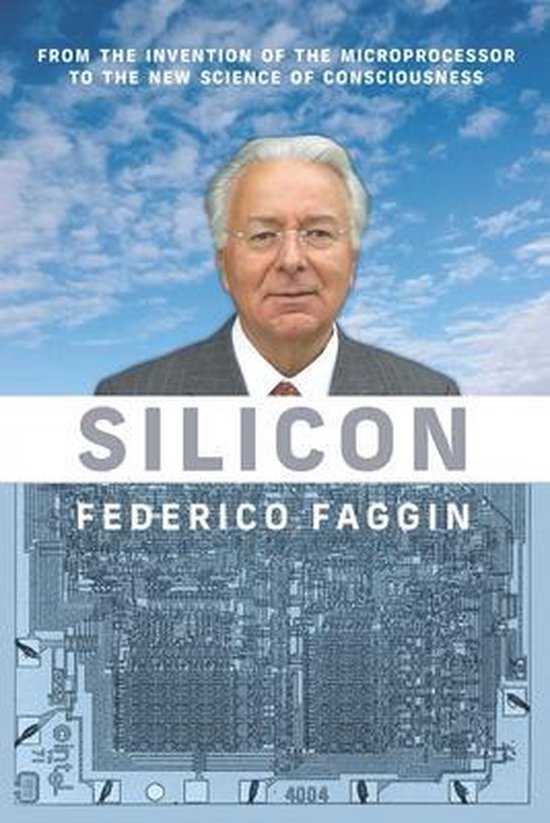
God is Universal Consciousness, which provides the underlying essence of matter, of all things in the universe. (See the "quantum" page.) However, I do not see how we can avoid speaking of God as a “personal God.”
The mathematics of probability strongly lead us to Intelligent Design. (See the "evolution" page.) Can there be such a thing as an Intelligent Designer if said entity is not also, in some sense, an Intelligent Person? How could there be intelligence without an intelligent person?
We speak of God’s love. Despite what skeptics view as a heartless and cold universe, there is a mountain of evidence to suggest that the universe was also created for our pleasure, education, developmental needs, and the like. All these are properly viewed as expressions of love. Can there be such a thing as a God of Love if said entity is not also, in some sense, a Loving Person? How could there be love without a loving person?
We might apply this reasoning to a number of attributes we ascribe to God, and when we do, I would say, it is unavoidable not to also judge said entity as a thinking, rational, feeling Person.
|
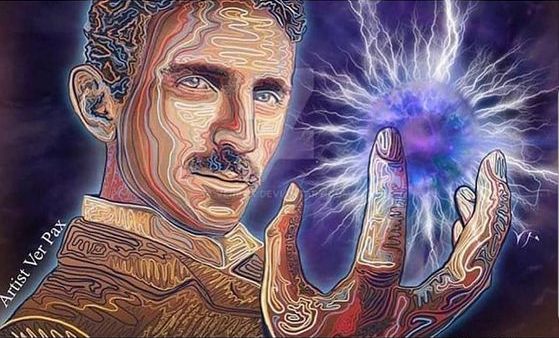 |
|
|
“The day science begins to study non-physical phenomena [that is, the primacy of consciousness], it will make more progress in one decade than in all the previous centuries of its existence.”
“If you want to understand the Universe, think of energy, frequency, and vibration.”
“My brain is only a receiver, in the Universe there is a core from which we obtain knowledge, strength, and inspiration. I have not penetrated into the secrets of this core, but I know that it exists.”
Nikola Tesla
|
|
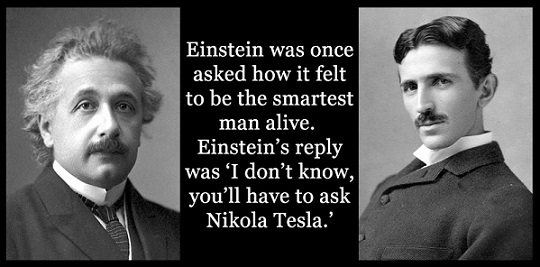 |
Editor's note: there's much yet to consider, but allow me to continue this discussion without the blocked-paragraph format.
Evolution seems to be leading us to a certain destination. I like the term “Omega Point” for this future-orientation.
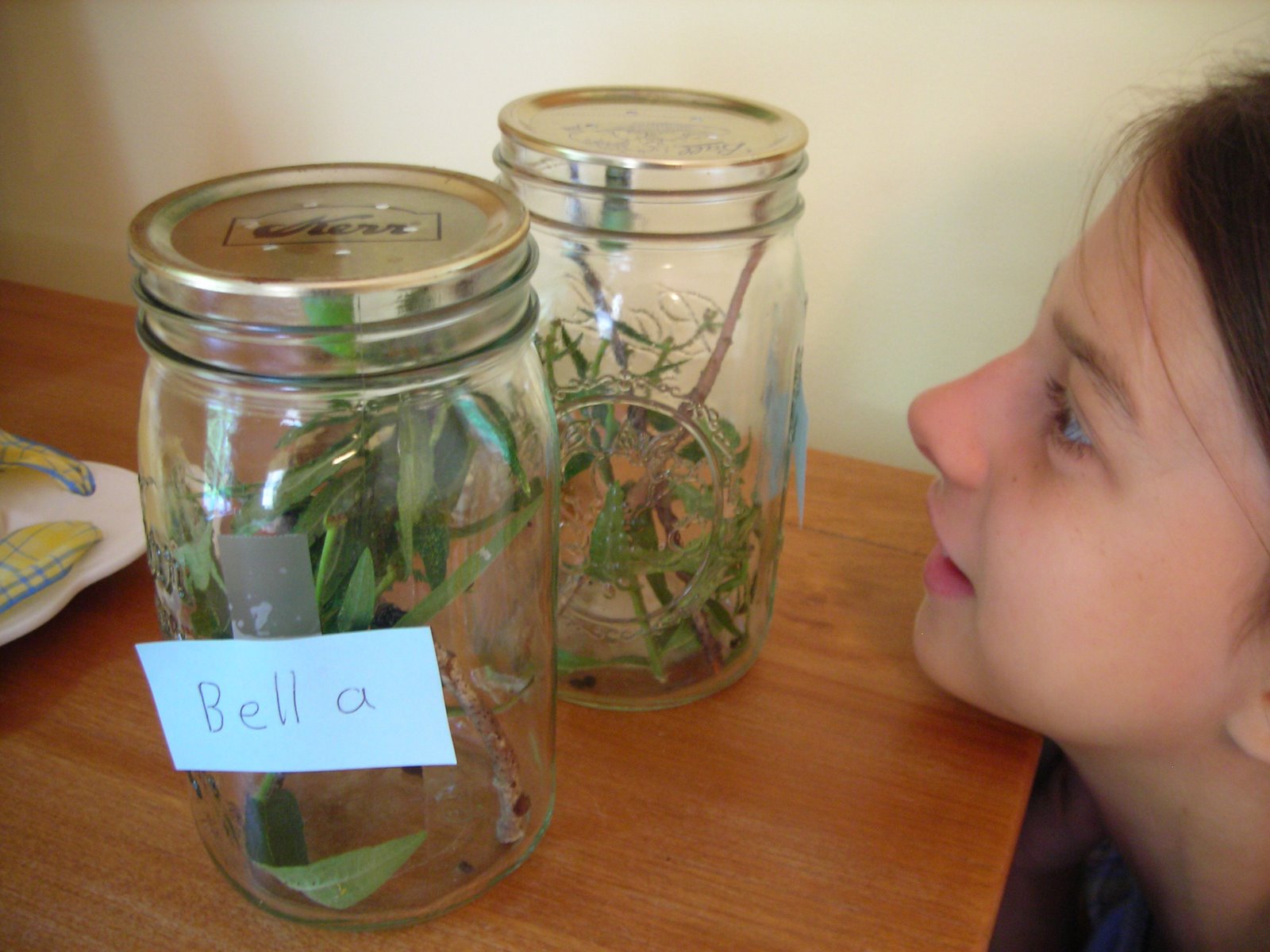
caterpillar in a jar
Many children have captured a caterpillar and placed it in a jar for observation. Dietary needs for the inmate are satisfied, it is assumed, by collecting a handful of whatever leaves or grass might be nearby.
This usually doesn’t end well. Often, the caterpillar refuses to eat – and might die.
We didn’t understand back then that what appeared to us as caterpillar food – “It’s green, it’s leafy, why wouldn’t you eat it?” – was about as tempting to our fuzzy friend as plastic bananas would be to us.
The hungry caterpillar, like most creatures, has a very specific and limited diet. It won’t just eat anything green. It wants a particular kind of plant to sustain itself.
.jpg)
|
The New Biology: Discovering The Wisdom In Nature, Augros and Stanciu: “Derived from a classic study by ecologist Robert MacArthur, this diagram illustrates how five species of warbler, similar in size and shape, feed on bud worms in the same spruce trees. They avoid competition by occupying subtly different niches. The shaded areas indicate where each species spends more than half its time. The birds also use different methods of hunting. This pattern of noncompetition is typical of naturally coexisting species.”
Editor's note: see much discussion in the Evolution writing. While it's popular for materialistic science to report of "dog eat dog" Nature, the real biologists who go looking for this "law of the jungle" cannot find it.
Indeed, if there were not cooperation among the many species of life, there would not exist any animals, at all, on planet Earth. See the discussion on the "Evolution" page from actual biologists working in the field, which upends the propaganda from Darwinistic evolution.
|
Nature has designed the ecosystem to minimize, and even eliminate, competition.
It does this by narrowly defining the survival needs of organisms. The very restricted diet of the caterpillar is just one example in a vast array by which Nature reduces competition.
In the above caption featuring the research of Robert MacArthur, we find five different species of warbler coexisting rather peacefully. This is accomplished by the birds staking out different territories, different areas of the same spruce tree.
In other examples of non-competition, we might find very similar birds eating different kinds of seeds. The seeds might look nearly the same to us, but, just like the finnicky caterpillar, particular birds want particular seeds. The real purpose in play here, however, is that of Nature increasing the level of harmony and cooperation in the natural world.
what is the inference to be drawn from all this
Look at the detail here. We’re talking about tiny seeds, or thin blades of grass, or certain limited sectors of a tree, all of which might seem, to the unschooled eye, as rather similar. We might gloss over these trifles as unimportant – and this is why our caterpillar in a jar is not doing so well.
And yet, these details are not too small for a superintending Universal Intelligence to take notice and to keep track of.
“how much more”
In the New Testament teachings of Jesus, from time to time we find him using the phrase “how much more.”
He might be talking about sparrows, or flowers of the field, or an unjust man; but then he’ll say, to the effect, “If God takes care of unthinking little animals, or flowers that bloom a short time, or someone who postures that he's not interested in God, then – how much more – will he help you with your cares?”
this is The Inferential Life from the great teacher
We’ve considered the Anthropic Principle that suggests, because randomness cannot surmount the mathematics of probability, everything around us, to one degree or another, is here because Somebody wanted it to be here.
What does this really mean? To what degree would God or Universal Intelligence get involved in one’s life? How small the detail of one’s life would God bother him/herself with to arrange things for our best interests?
I think we’ve been given our answer. If Universal Intelligence gets down-and-dirty even with sorting out tiny seeds, choosing the best very-slightly-altered seed for one bird as opposed to another, then – how much more – will the details, the very smallest details, of our existence -- ones "made in the image" -- be of interest to the Universal Force who supervises our lives?
Editor’s note: Materialistic science views reality as something meaningless, without purpose. It’s as if, we, as individuals, are floating alone, lost, bereft, in the blackness of outer space. We’re disconnected, they say, from any whole; no one knows of our accidental existence; no one is “out there” to hear, they say, in our time of need when we call. But this is not true. How can we know it’s not true? We can know by observing how the seemingly smallest creatures of the world live in a specially-crafted environment which reduces competition and promotes an interrelated well-being among the animals of planet Earth. And if this supervision, the micromanagement, occurs on the level of tiny birds, seeds, blades of grass, and caterpillars, “how much more” is our destiny being attended to and worked out?

The Inferential Life, Part I
The Inferential Life, Part III
The Inferential Life, Part IV
|



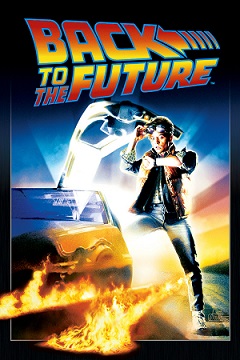

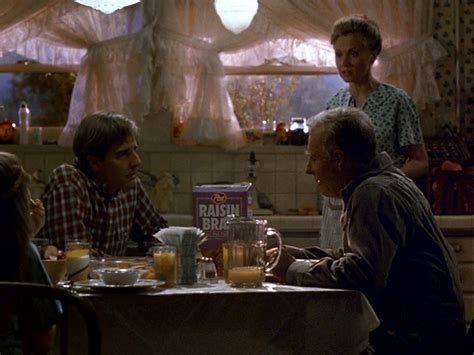














.jpg)